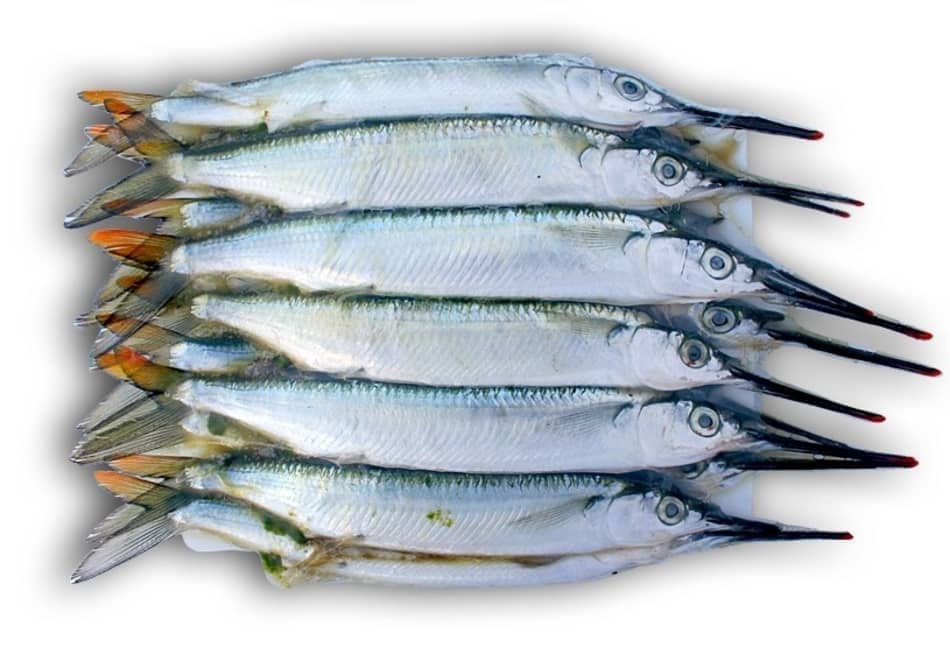
I have learned from past experience, that there is nothing more frustrating than bringing expired bait on the boat and not knowing its state until it’s too late.
How Long Does Frozen Bait Last?
As a general rule, baits adequately stored in the freezer last 3 to 24 months when proper preservation techniques have been followed. Baits with high-fat content have a shorter usable life. In contrast, lean baits have a longer usable life.
Let’s take a look at different frozen baits, their average usable life span, and some expert tips and tricks to extend the lifespan of your frozen baits. Keep in mind, these numbers are for optimal usage, they can all be used past the time frame suggested, but with less fishing success.
The typical lifespan for frozen baits varies drastically depending on the type of baitfish, how fresh they were when frozen, and the preservation techniques followed. Fish typically have the shortest usable life due to the high concentrations of fat in the flesh. The overall usable life increases as we move away from baits high in fat to a leaner bait option. Sardines, for example, are fish with an overall low fat content making them a great long-term frozen bait option. Leaner meats store better than fattier meats because fat oxidizes at a far quicker rate than protein. When fats are exposed to air, they quickly become rancid within weeks, even if proper preservation techniques have been followed. Let’s look at the average usable life spans for common frozen baits starting with the shortest lifespan.
Typical Frozen Bait Useable Life
| Type of Bait | Optimal Usable Life (Frozen) |
| Shrimp | 3 Months+/- |
| Mackerel | 3 Months +/- |
| Mullet | 5 Months +/- |
| Bonito | 6 Months +/- |
| Silversides | 8 Months +/- |
| Pilchards | 9 Months +/- |
| Sardines | 14 Months +/- |
| Ballyhoo | 14 Months +/- |
| Squid | 24 Months +/- |
Frozen Shrimp: On average frozen shrimp last 3 months in the freezer when properly stored. Though they are extremely low in fat, shrimp tend to lose their compact nature after freezing since the shrimp is expanding in the freezer, breaking down the structural nature of their shells.
Frozen Mackerel: On average frozen mackerel lasts 3 months in the freezer when properly stored. The short useful life of mackerel is directly related to the high levels of fat content found in the fish.
Frozen Mullet: On average frozen mullet lasts 5 months when properly stored. Larger mullets typically have an increased fat to lean body mass ratio causing them to expire quicker than their leaner kin.
Frozen Bonita: On Average, Bonito last 6 months in the freezer when properly stored.
Frozen Silversides: On average, silversides last 8 months when proper storing measures have been followed. Since silversides are typically stored in bags with other small fish, removing all air from the bag can become difficult. If you are not using a vacuum sealer, you may experience a shorter usable life.
Frozen Pilchards: On average frozen pilchards last 9 months when properly sealed.
Frozen Sardines: On average frozen sardines last 14 months when properly sealed.
Frozen Ballyhoo: On average frozen ballyhoo last 14 months.
Frozen Squid: On average frozen squid last 24 months when properly sealed.
How To Best Preserve Frozen Bait?
Step 1: While the bait is still alive, throw them into a bucket filled with salt water, ice, and a brine mixture. This process is called “wet brining” and is a great way to keep your baits from starting to rot when still out on the boat. The biggest mistake I see anglers making is not starting the preservation process early enough.
Step 2: Once back at the dock, take baits out of the ice and quickly remove moisture from the skin. You can easily dry the baits with a towel.
Step 3: Fill a large plastic bag with your favorite brining mix. We recommend Bionic Brine. Once the bag is packed with the brining mix, take all leftover baits and place them in the bag making sure there are no curves in the baits. Any bends of the fish will lead to weak spots when the baitfish is eventually thawed for use.
Step 4: Once the baits are placed into the freezer bag, begin to lightly massage the baits working the fine pieces of brine into the bait.
Step 5: Next, start vacuum sealing the bait bags. This can be performed with a typical vacuum sealer, or you can simply submerge the plastic bags into a bucket of water, stopping the submersion just before the top of the bag.
Step 6: Place your recently brined fish immediately into the freezer, preferably in the middle center, where the temperature will remain consistent over time.
Can You Refreeze Your Bait?
As a general rule, baits should not be refrozen after they have thawed. When a frozen bait has spent the day thawing on the boat, the bait further breaks down, losing firmness and its proper smell. Though many anglers decide to freeze leftover baits for the second time, it is not optimal and can significantly hinder your success on the water. With that said, refreezing baits to be used as future chum is a great option when you aren’t ready to part with the baits you’ve worked so hard to acquire.
Is Live Bait Better Than Frozen Bait?
Live bait is far superior to frozen bait, but often frozen bait becomes your only option when live bait is hard to come by. Live bait has always outfished frozen since frozen baits lack movement, freshness, and overall attraction. Though some fish, including the red drum, have preferred frozen ladyfish over a live sardine, this is typically an outlier rather than the rule.
Where Can You Buy Frozen Bait?
Frozen bait is frequently sold at large box stores, including Walmart, Bass Pro Shops, Cabelas, and West Marine, but I would recommend shopping at a local mom-and-pop tackle shop where you will most likely find the freshest bait at a reasonable price. Frozen bait is also purchased from local fishermen in your area. A great way to find a local bait connection is by asking local fishermen if they have a connection for fresh bait. Also, a simple google search can pull up a handful of options as well.
